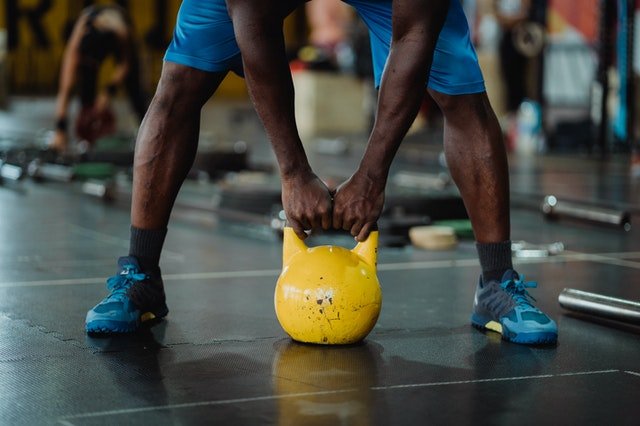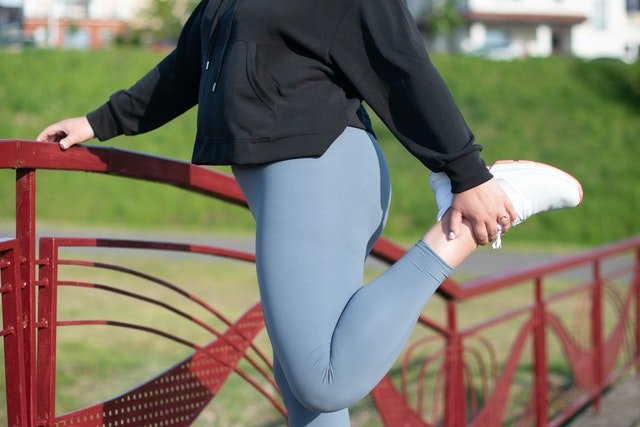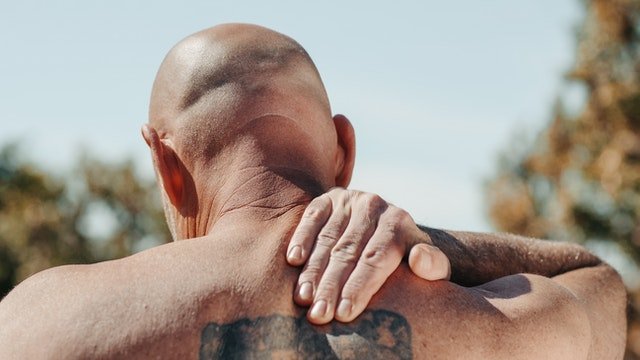Why Do Kettlebells Hurt My Quads?
After training with kettlebells you realise that your quads hurt, but why is this?
This could be down to a number of reasons.
As you may or may not know already, kettlebells use a lot of eccentric contraction.
Which means contraction occurs when the total length of the muscle increases as tension is produced.
For example, the lowering phase of a kettlebell swing constitutes an eccentric contraction on the hamstrings and calves. Muscles are capable of generating greater forces under eccentric conditions than under either isometric or concentric contractions.
This means when that kettlebells more than other equipment can make you realise you have muscles you didn’t know you had.
Why Do Kettlebells Hurt My Quads?
Kettlebells hurt you’re quads for a number of reasons. The main one would be the fact that your technique needs a slight adjustment. As you as over compensating the movement of the kettlebell with your quadriceps, for them to hurt. Whether this is down to being a new user of kettlebells or there is a problem elsewhere, which is making the quads work more remains to be seen and needs monitoring by the individual. DOMS are another common problem people come across. Delayed onset muscle soreness (DOMS) is the pain and stiffness felt in muscles several hours to days after unaccustomed or strenuous exercise. The soreness is felt most strongly 24 to 72 hours after the exercise. There is training overload which is a basic yet overlooked problem, then there’s the factor of using a kettlebell that’s either too light or heavy for the individual concerned. For more in depth information read on…
Quadricep Pains, Strains & Grades
The quadriceps muscle is in actual fact a group of four muscles in your front thigh that connect to your knee just below the knee cap.
Heres a little run down of the movements the quadriceps allow us to do:
- Straighten the knee when kicking a ball.
- Bend your knee, allowing you to squat.
- Move your leg forward as you run and fire as your foot contacts the ground to absorb shock.
- The muscles also help you jump and provide stability.
Athletes that encounter quadricep strains often mention a “pulling” sensation in the front of the thigh.
Pain, swelling, bruising and muscle tenderness may also occur. Its severity is categorized by grades:
- Grade 1 is where the player has mild discomfort in the thigh and no loss of strength.
- Grade 2 is when moderate pain, swelling and some loss of strength occurs.
- Grade 3 is a complete rupture of the fibers leaving the player in severe pain and unable to walk. Grade 3 usually requires surgery.
Quadriceps tears can sideline an individual, anywhere from two weeks to three months depending on the severity of the injury.
Check Your Posture For Minute Adjustments
You could think of the swing as a deadlift, as you drive forward with your hips.
Whenever you bend your knees, the quads take over and this eliminates the main benefits of the swing.
With this in mind it can be difficult to know what’s right and what’s too much “bending of the knee”.
The most common reason why kettlebells hurt your quads is because of technique. Whether you are a newbie to swinging or a seasoned veteran…peoples posture can always do with a tweak or two.
Not all of us are lucky enough to have access to great trainers and there’s lots of videos and pictures out there with conflicting information.
If you are bending your knees too much when performing a swing for example, as the kettlebell swings between your legs, you should be bending your knees slightly and hinging with your hips to allow the kettlebell to swing between your legs in a smooth motion.
If you are bending your knees more than this, it will mean you are activating your quads more than you need to.
Over time during the workout, your quads will get overloaded with not only the weight of the kettlebell, but the added force of the swinging bell too, which means double trouble for those poor quads of yours.
A good indicator for knowing you are bending your knees too much would be to perform the exercise in the mirror or even film yourself.
Take a long look at the swing of the kettlebell, it should be like a pendulum movement (semi circle even) from its highest point, to its descent between your legs. If there’s an extra drop or movement in the KB, you are more than likely bending your knees too far and over working the quadriceps.
This also applies if you bend over too far with your upper torso. A good indicator is if bell is nearly hitting the floor your way off the mark.
Don’t forget to thrust your hips when bringing kettlebell in front of you, as if you don’t you will be putting too much stress on your back and quads.
Who’d have thought a kettlebell swing could be so complex?
You must also think as to whether the feeling in your quads is soreness from training and not pain. There’s a huge distinction that needs to be realised. Soreness is part of the process, whereas pain will need rest and maybe a visit to your local doctor or health professional to examine the problem.
This also links into whether the problems in the quads are actually coming from a weaker muscle or muscles around the quadriceps area, which will be making the quads work harder than they need to?
Once again, only you can determine if this is the case or not. Have you had a previous injury with your knees or hips? Over compensating due to a weak or injured muscle elsewhere needs considering too.
Turn Down The Volume!
Beginner’s sets would typically run between 15 to 30 seconds and repeated until fatigued.
Long periods over minutes straight, plus another minute or so straight after is far beyond what I would ever prescribe for a newbie.
We all like to think that we can always go the extra mile and most of the time we can, however your body may not agree with you.
This is why it’s important to dial back the amount of time you spend working out if you are experiencing discomfort in your quads.

DOMS – Good & Bad
You would have all been exercising enough by now to know what DOMS are? If you don’t, allow me to enlighten you.
Sore muscles after moderate physical activity, known as delayed onset muscle soreness (DOMS) can occur when you start a new exercise programme, change your exercise routine, or increase the duration or intensity of your regular workout. Does any of these ring any bells with your recent workout schedule?
When muscles are required to work harder than they’re used to or in a different way, it’s believed to cause microscopic damage to the muscle fibres, resulting in muscle soreness or stiffness.
DOMS is often mistakenly believed to be caused by a build up of lactic acid, but lactic acid is not involved in this process.
Anyone can develop DOMS, even those who have been working out for years, which also includes elite athletes.

It can be disconcerting for people who are new to exercising and may affect their initial enthusiasm to get fit.
The good news is the soreness will decrease as your muscles get used to the new physical demands being placed upon them.
The soreness is part of an adaptation process that leads to greater stamina and strength as the muscles recover and build.
DOMS normally last between 3 to 5 days. The pain, which can range from mild to severe, usually occurs 1 or 2 days after the exercise and can really prohibit movement when they occur.
This sort of muscle pain should not be confused with any kind of pain you might experience during exercise, such as the acute, sudden and sharp pain of an injury, such as muscle strains or sprains.
There’s no one simple way to treat DOMS. Nothing is proven to be completely effective.
The below may help ease some of the symptoms:
- rest
- ice packs
- painkillers
- massage
Stretching Habits
It goes without saying that you should stretch and warm up before you participate in any exercise.
If you are starting to exercise cold, there’s a high probability you will pull a muscle at some point, especially if you are an older person or if you have had an injury in that area before.
Statistics show that if you have been injured in a certain place before, it’s highly likely that you will get injured in that same place again.
Always warm up before you exercise.
If you aren’t sure what type of stretching to do, you could try my 15 minute warm up routine I did a while back. It incorporates yoga sun salutation, as well as some yoga poses and general movement flow.
If you enjoyed this, then please check out the YouTube channel, with over 40 workouts which include the use of kettlebells, resistance bands, dumbbells and even body weight exercises too.
Don’t forget, I will be adding more workouts weekly to help you stay fit and healthy at home with just the use of a kettlebell.
With workouts of all types, for all fitness levels. You know that we have you covered, so stay tuned for more.
If you enjoy sport and use CBD to help with your recovery in between gruelling workouts, then your are in the right place. Here at Sport CBDs, we train hard and recover the best way possible…
We have regular workouts (check out the YouTube channel), CBD news and CBD products to help you gain that edge!
If you wanted to check out the reputable CBD we have on offer here at the site, then please head to the Sport CBDs Store. We also do fitness clothing and yoga accessories too.
Untill next time, all the best…


